Somebody left the lights on
Feb 15, 2020 21:32:19 #
One of the parks that I go to has a large visitors center with rooms for a small museum, classrooms, and offices. On one occasion last July I came to the park early in the morning, all set to wander for miles through its forest trails and meadows. But those plans soon came to halt since the flood lights around the visitors center had been left on all night, and there were still many nocturnal insects hanging out. I spent over two hours taking pictures of the insects (mostly moths), and I never did get to see much of the park that day!
I do recommend that people download these pictures to see them full size. Luxuriate in the scales!
The first two pictures are of the American dagger moth (Acronicta americana). This species is the largest of our ‘dagger moths’, which are a group within the Noctuidae family. The common name refers to the stinging hairs on the fuzzy larvae.
A mystery moth is next, but I am pretty sure it is a Noctuid of some sort. It especially resembles the species Agrotis ipsilon, but I am not sure that I have this one right.
The wonderfully textured moth in the next picture is called the pink-shaded shaded fern moth (Callopistria mollissima). The larva of this species feed on ferns.
The colorful moth in the next picture is also named after its larval diet. This is the painted lichen moth (Hypoprepia fucosa). Larva of this one feed on … well, lichens of course. The bright colors are a warning that this moth is toxic. There are many species of lichen moths, and together they are close relatives to the more familiar tiger moths – which are also often brightly colored as adults.
Next is the moth that had the largest wingspan that was out that day. This is the tulip tree beauty (Epimecis hortaria), and its larvae feed on tulip trees. This species belongs to the Geometridae (so-named as the larvae are “inchworms”). Adult Geometrid moths are generally easily recognized since they hold their angular wings out flat as this one does. Note the fringe of scales that fill in the shadow under the wings.
Camouflage to resemble tree bark is pretty common among moths. But some species instead resemble bird droppings. This form of camouflage (or is it mimicry?) allows an insect to sit out in plain site- to do what bird poo do. I have two such species here. First, there is the tufted bird dropping moth (Cerma cerintha), a species I had shown here a few months ago. The common name refers to the prominent tufts of scales along its back, as shown here: https://bugguide.net/node/view/541484 .
Next is a species that I had been wanting to see for years. This example of bird dropping mimicry is slightly famous since it uses its legs to resemble a splattered dropping. So it is rather jarring that its common name is beautiful wood nymph (Eudryas grata).
Not all of the finds were moths. The largest insect at the lights was this summer fishfly (Chauliodes pectinicornis). – about the size of your index finger. The white spot on the head is one of its ‘simple eyes’, or ocelli. Their larvae are aquatic.
Finally, the most exciting find is shown in the last picture. This is a giant caddisfly (Ptilostomis sp.) -- about the size of your little finger, although that is impressive for this kind of insect. Caddisfly adults resemble moths, but they belong to a completely different insect order. Their larvae live in water and most species, like this one, use twigs or pebbles to build a protective case. Here is a giant caddisfly larva: https://bugguide.net/node/view/352857 . This adult was too far for the macro lens, so I had to use the zoom lens in this heavily cropped picture.
I do recommend that people download these pictures to see them full size. Luxuriate in the scales!
The first two pictures are of the American dagger moth (Acronicta americana). This species is the largest of our ‘dagger moths’, which are a group within the Noctuidae family. The common name refers to the stinging hairs on the fuzzy larvae.
A mystery moth is next, but I am pretty sure it is a Noctuid of some sort. It especially resembles the species Agrotis ipsilon, but I am not sure that I have this one right.
The wonderfully textured moth in the next picture is called the pink-shaded shaded fern moth (Callopistria mollissima). The larva of this species feed on ferns.
The colorful moth in the next picture is also named after its larval diet. This is the painted lichen moth (Hypoprepia fucosa). Larva of this one feed on … well, lichens of course. The bright colors are a warning that this moth is toxic. There are many species of lichen moths, and together they are close relatives to the more familiar tiger moths – which are also often brightly colored as adults.
Next is the moth that had the largest wingspan that was out that day. This is the tulip tree beauty (Epimecis hortaria), and its larvae feed on tulip trees. This species belongs to the Geometridae (so-named as the larvae are “inchworms”). Adult Geometrid moths are generally easily recognized since they hold their angular wings out flat as this one does. Note the fringe of scales that fill in the shadow under the wings.
Camouflage to resemble tree bark is pretty common among moths. But some species instead resemble bird droppings. This form of camouflage (or is it mimicry?) allows an insect to sit out in plain site- to do what bird poo do. I have two such species here. First, there is the tufted bird dropping moth (Cerma cerintha), a species I had shown here a few months ago. The common name refers to the prominent tufts of scales along its back, as shown here: https://bugguide.net/node/view/541484 .
Next is a species that I had been wanting to see for years. This example of bird dropping mimicry is slightly famous since it uses its legs to resemble a splattered dropping. So it is rather jarring that its common name is beautiful wood nymph (Eudryas grata).
Not all of the finds were moths. The largest insect at the lights was this summer fishfly (Chauliodes pectinicornis). – about the size of your index finger. The white spot on the head is one of its ‘simple eyes’, or ocelli. Their larvae are aquatic.
Finally, the most exciting find is shown in the last picture. This is a giant caddisfly (Ptilostomis sp.) -- about the size of your little finger, although that is impressive for this kind of insect. Caddisfly adults resemble moths, but they belong to a completely different insect order. Their larvae live in water and most species, like this one, use twigs or pebbles to build a protective case. Here is a giant caddisfly larva: https://bugguide.net/node/view/352857 . This adult was too far for the macro lens, so I had to use the zoom lens in this heavily cropped picture.
American dagger moth
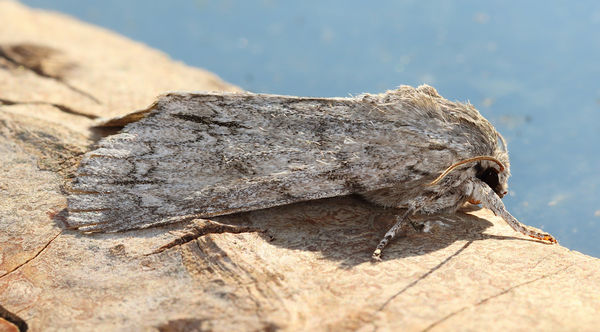
(Download)
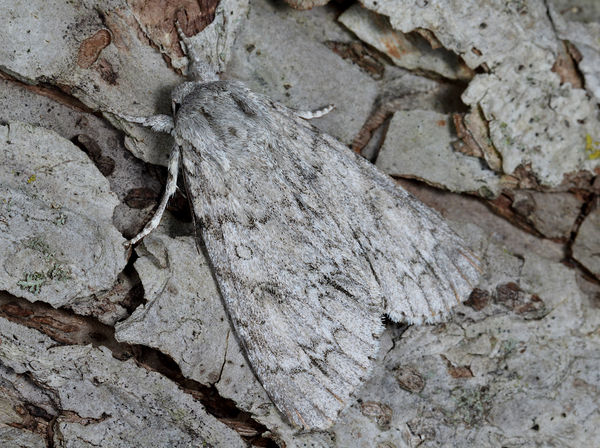
(Download)
Agrotis ipsilon maybe
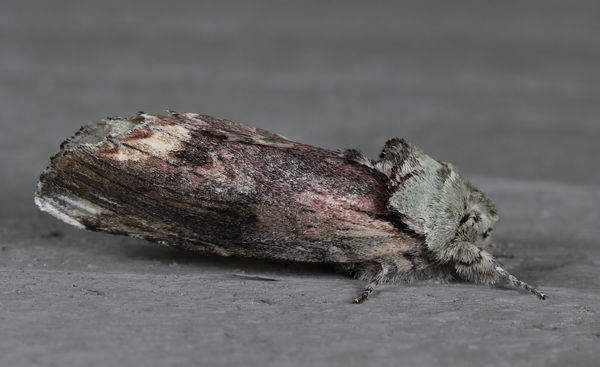
(Download)
Pink-shaded fern moth
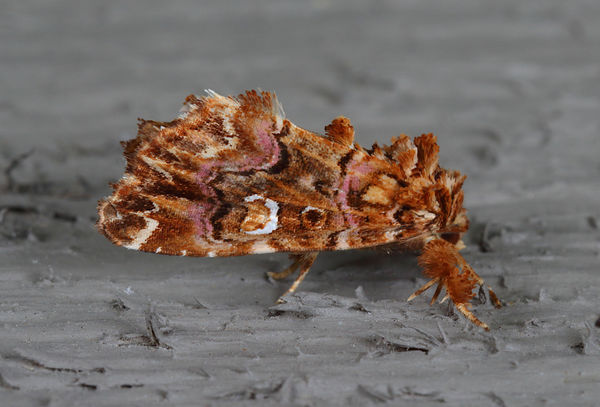
(Download)
Lichen moth
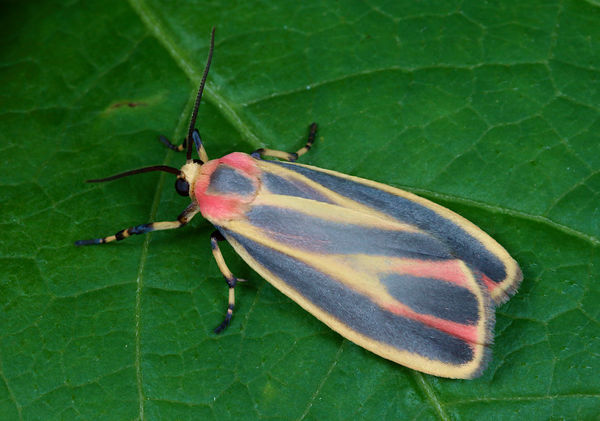
(Download)
Tulip tree beauty
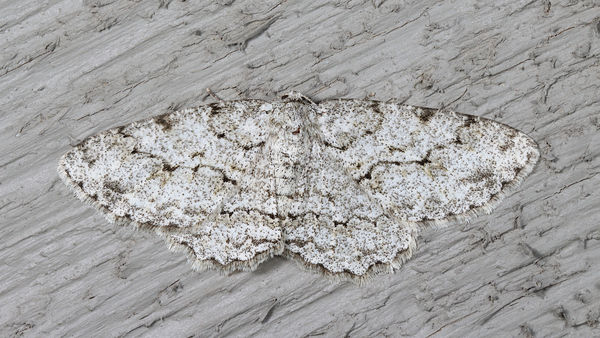
(Download)
Tufted bird dropping moth
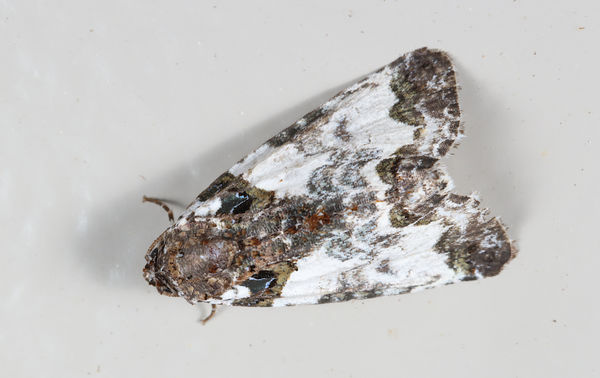
(Download)
Beautiful wood nymph
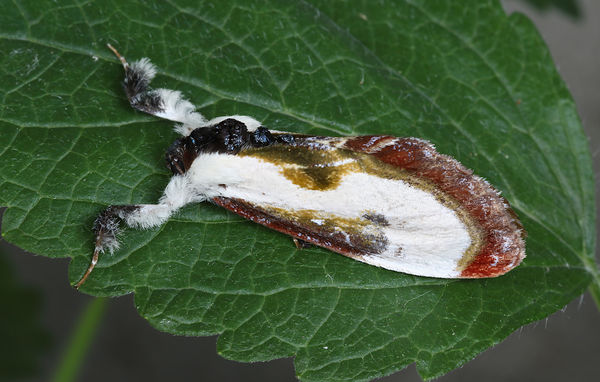
(Download)
Summer fish fly
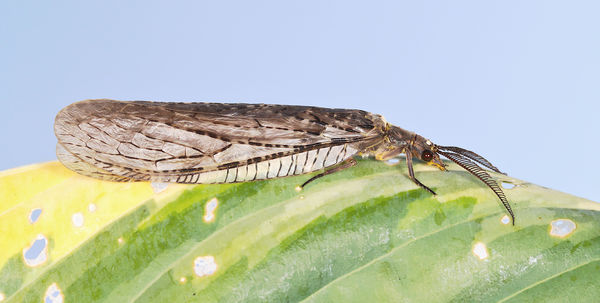
(Download)
Giant caddisfly
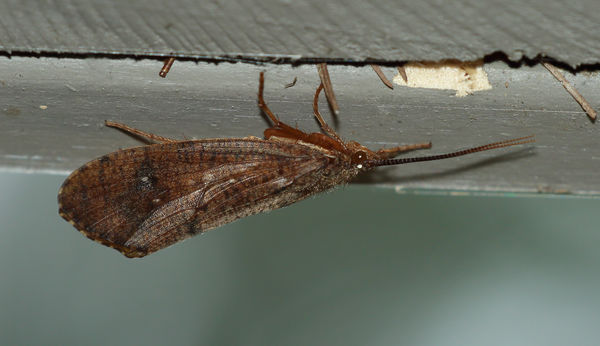
(Download)
Feb 16, 2020 07:09:33 #
That is quite a collection you have there and all nicely shot. Do you see the Lichen moth on any particular group of Lichens? I would love to find one.
Feb 16, 2020 08:43:15 #
EnglishBrenda wrote:
That is quite a collection you have there and all nicely shot. Do you see the Lichen moth on any particular group of Lichens? I would love to find one.
The lichen moth was near a light. But now that I know of them, I can look for the larvae on lichens. Also, maybe I can find fern moth larvae on ferns.
Feb 16, 2020 09:04:57 #
Feb 16, 2020 09:12:27 #
Mark Sturtevant wrote:
The lichen moth was near a light. But now that I know of them, I can look for the larvae on lichens. Also, maybe I can find fern moth larvae on ferns.
Thanks, I will start looking too.
Feb 16, 2020 10:23:15 #
Feb 16, 2020 10:32:41 #
Feb 16, 2020 13:17:13 #
Feb 16, 2020 13:47:20 #
kpmac wrote:
Very nice, Mark.
Mark, always enjoy your series.
This one a group of familiar friends of mine from the 70's
Pretty much all of these exhibit cryptic coloration to aid in camouflage.
They will disappear when on a tree or other natural background.
For lichen moths.
Sit and watch for movement on tree boles. The larva very well camouflaged. Find adults in early am in fields, often hiding in low to ground grass and weeds. Just walk thru weeds. May be easy to raise, obvious husbandry.
FYI
A 300 watt Sunpac halogen light for photography can be had for a song on Ebay.
This and a movie screen, the one that was in every classroom I was ever in, will draw insects for hundreds of yards.
90% of which probably will be new to most. And small.
Bill
Feb 16, 2020 15:23:37 #
Excellent images along with great narratives. I always learn something from your posts and they show me critters that I have not met before.
Feb 16, 2020 17:13:39 #
If you want to reply, then register here. Registration is free and your account is created instantly, so you can post right away.









